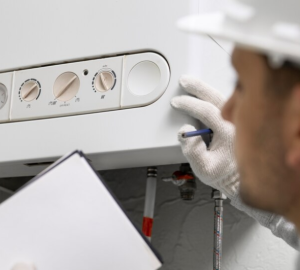There’s a big drive to reduce carbon emissions in the UK. And let’s start by saying that the construction industry isn’t the worst contributor.
Still, it does account for approximately 40% of annual CO2 output. Fear not – new technologies and practices do give the industry the potential to reduce its impact.
Read on to learn more.
Embracing Energy-Efficient Practices
Energy-efficient practices in construction must meet regulatory demands. In the UK, green building standards like LEED or BREEAM are transforming the industry. The projects prioritise environmental responsibility and functional design.
What do the frameworks do? Create a resource of materials with better insulation and durability. That should reduce the operational energy demands of buildings, encouraging the integration of renewable energy sources.
This proactive approach in construction creates long-term cost savings for property owners with reduced utility bills.
But it’s not all proactive just yet – there’s still a long way to go.
Innovations in Construction Materials
Innovative construction materials are essential. They’ll reduce the carbon footprint of buildings and infrastructure (in time) and damage to the environment. We’re talking about innovations like:
- Carbon-Capturing Concrete: New formulas for concrete to absorb carbon dioxide from the atmosphere when curing. It’s a growing trend, also known as carbon removal.
- Insulating Techniques: Improved insulating techniques and materials will reduce the energy required for heating and cooling. Everyone homeowner will appreciate the fact this brings cheaper energy bills.
- Precast Dock Leveller Systems: The actual ground environment always suffers with construction. It’s not all about emissions. A precast dock leveller system is designed in controlled factory settings, significantly minimising construction waste and on-site environmental disturbance.
Renewable Energy Integration
Solar panels, wind turbines, and bioenergy technologies directly into new constructions or as retrofit applications are significantly cutting down operational carbon emissions. It’s becoming a big focus in the UK.
This integration contributes to reducing a building’s carbon footprint and improves its energy independence. These natural energy sources mean buildings are working more sustainably, lowering utility costs and increasing resilience against energy price fluctuations.
And – government incentives for green energy initiatives can make the adoption of renewable technologies more financially viable. It’s not happening just yet, but it could do.
Sustainable Urban Planning
It’s all about planning. Effective planning can reduce the carbon footprint by minimising the need for extended transportation and the project itself. Nine out of ten projects are behind schedule in the UK.
Instead, the focus should be on planning cities in a way that encourages public transportation use, biking, and walking. Still, governments can plan this all they want – the local people actually have to use it. Well-planned urban environments focusing on density and accessibility will create more energy-efficient communities.
Integrating green spaces and ensuring urban development complements natural landscapes are also essential. As we said – it’s not all about the emissions, it’s what they’re doing to the natural environment.
The construction industry is just one of the industries that must reduce its carbon footprint. Initiatives like Net Zero are at the forefront of it. It’ll be interesting to see how much the industry can reduce its footprint by 2030 (when most companies want to be Net Zero).









